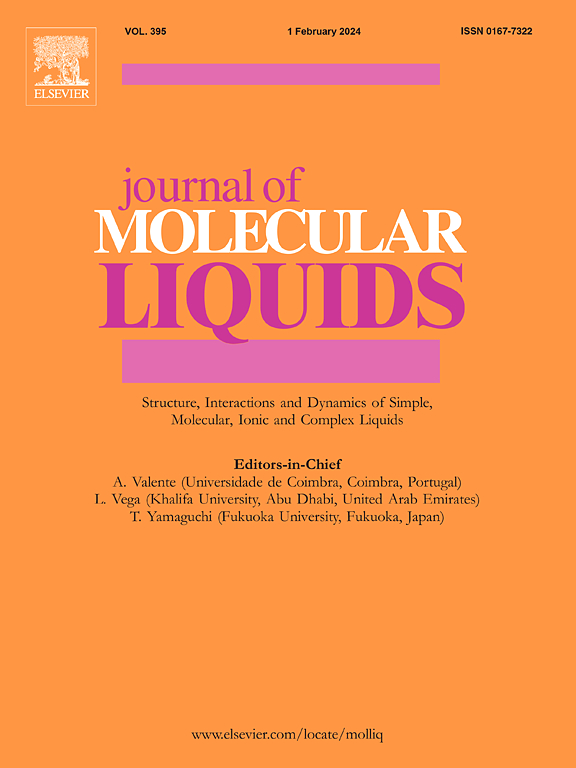Self-aggregation and antimicrobial activity of cationic benzimidazolium surfactants: Electrolyte effect on the Krafft temperature
IF 5.3
2区 化学
Q2 CHEMISTRY, PHYSICAL
引用次数: 0
Abstract
In the present work, biomimetic approach was implemented using benzimidazole as a biofragment for the synthesis of amphiphilic compounds. A homologous series of cationic surfactants with a benzimidazolium head group and different lengths of the alkyl tail (BI-n, n = 10, 12, 14, 16) was obtained. The influence of the surfactant structure on aggregation, functional and biological properties was studied. In particular, the self-association of surfactants in aqueous solutions, solubilizing ability, antimicrobial and hemolytic activity, and cytotoxic effect were studied. For higher homologues, the effect of salt additives (NaCl) of various concentrations on the Krafft temperature and aggregation activity of surfactants were studied. It was shown that with an increase in the length of the hydrophobic tail of the amphiphile, a decrease in the aggregation thresholds and an increase in the Krafft temperature occurred (from 17.5 °C for BI-10 to 48 °C for BI-16). Benzimidazolium surfactants exhibit high bacteriostatic and bactericidal activity, as well as low hemolytic activity. In addition, the BI-n series showed a selective cytotoxic effect on cancer cells. The surfactants also turned out to be effective solubilizers for the hydrophobic substrate. Addition of salt to solutions of higher surfactants homologues (BI-14 and BI-16) made it possible to achieve a significant decrease in the Krafft temperature (by 8 degrees), as well as aggregation thresholds by 6 times. This study is expected to improve the understanding of the influence of structural parameters of surfactants on their aggregation and biological activity.

求助全文
约1分钟内获得全文
求助全文
来源期刊

Journal of Molecular Liquids
化学-物理:原子、分子和化学物理
CiteScore
10.30
自引率
16.70%
发文量
2597
审稿时长
78 days
期刊介绍:
The journal includes papers in the following areas:
– Simple organic liquids and mixtures
– Ionic liquids
– Surfactant solutions (including micelles and vesicles) and liquid interfaces
– Colloidal solutions and nanoparticles
– Thermotropic and lyotropic liquid crystals
– Ferrofluids
– Water, aqueous solutions and other hydrogen-bonded liquids
– Lubricants, polymer solutions and melts
– Molten metals and salts
– Phase transitions and critical phenomena in liquids and confined fluids
– Self assembly in complex liquids.– Biomolecules in solution
The emphasis is on the molecular (or microscopic) understanding of particular liquids or liquid systems, especially concerning structure, dynamics and intermolecular forces. The experimental techniques used may include:
– Conventional spectroscopy (mid-IR and far-IR, Raman, NMR, etc.)
– Non-linear optics and time resolved spectroscopy (psec, fsec, asec, ISRS, etc.)
– Light scattering (Rayleigh, Brillouin, PCS, etc.)
– Dielectric relaxation
– X-ray and neutron scattering and diffraction.
Experimental studies, computer simulations (MD or MC) and analytical theory will be considered for publication; papers just reporting experimental results that do not contribute to the understanding of the fundamentals of molecular and ionic liquids will not be accepted. Only papers of a non-routine nature and advancing the field will be considered for publication.
 求助内容:
求助内容: 应助结果提醒方式:
应助结果提醒方式:


